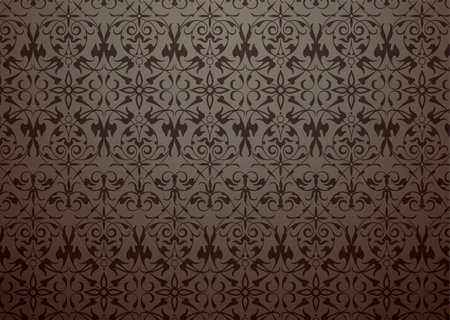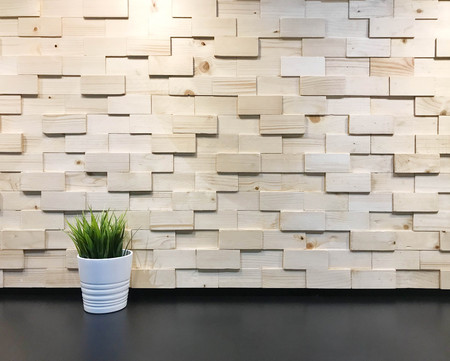Introduction to Textured Tiles
If you’re dreaming of transforming your bathroom into a relaxing, spa-like retreat, textured tiles are a must-have element. Unlike traditional smooth tiles, textured tiles offer a unique tactile experience and bring added depth and dimension to your space. These tiles come in a wide variety of patterns and materials—think natural stone, wood-look ceramics, and even 3D porcelain options—that can instantly elevate your bathroom’s ambiance. The gentle ridges and subtle grooves found on textured tiles not only make your bathroom look more inviting but also help evoke that calming, nature-inspired vibe you find at high-end spas. Whether you want to create a soothing shower sanctuary or an eye-catching feature wall, textured tiles are ideal for setting the mood. Plus, their anti-slip properties add an extra layer of safety, making them perfect for wet environments. By choosing the right textures and finishes, you’ll be well on your way to achieving a serene spa-inspired bathroom that feels both luxurious and welcoming.
Popular Types of Textured Tiles
When it comes to creating a spa-like atmosphere in your home, selecting the right type of textured tile is essential. The tactile and visual qualities of these tiles can instantly elevate your bathroom or wellness space, offering both luxury and comfort. Below are some of the most popular textured tile options commonly found in American homes, each with its own unique appeal:
| Tile Type | Unique Feel | Visual Appeal |
|---|---|---|
| Pebble Tiles | Natural, massage-like sensation underfoot; reminiscent of riverbeds | Organic, calming look that evokes nature and tranquility |
| Wood-Look Tiles | Warm texture similar to hardwood; comfortable for bare feet | Brings rustic charm and spa-inspired warmth without moisture concerns |
| Wave-Patterned Tiles | Smooth undulating surface; relaxing to the touch | Creates a soothing, flowing visual effect reminiscent of water |
Pebble tiles are a favorite for shower floors, providing a gentle foot massage and a slip-resistant surface that feels like you’re walking along a serene creek. Wood-look tiles offer the cozy aesthetics of natural wood, but with the durability and water resistance required for spa-inspired bathrooms. For those seeking a more modern vibe, wave-patterned tiles bring subtle movement to walls or backsplashes, visually echoing the calming motion of water. Each of these options not only enhances the sensory experience but also adds depth and character to any spa-like retreat.

3. Placement Ideas for Maximum Impact
When it comes to creating a true spa-like retreat at home, where you place your textured tiles makes all the difference. Strategic placement not only maximizes the visual appeal but also elevates the sensory experience. Here are some key areas where textured tiles can really shine and help bring that luxurious, tranquil atmosphere to your bathroom.
Shower Floors
The shower floor is one of the most popular spots to use textured tiles. Not only do they add a stylish, natural element reminiscent of high-end spas, but they also provide added slip resistance — an important safety factor. Choose pebbled or subtly ridged tiles in soothing colors for a massage-like feel underfoot every time you step into the shower.
Accent Walls
If you want to create a striking focal point, consider installing textured tiles on an accent wall. This could be behind your vanity, along the bathtub, or even in the shower itself. Textured stone or sculpted ceramic tiles can introduce dimension and depth, instantly making the space feel more luxurious and thoughtfully designed. Pair these with soft lighting to highlight their unique patterns and shadows.
Backsplashes
A backsplash is another prime spot to incorporate textured tiles for a spa-inspired touch. Whether it’s behind the sink or around your tub, a backsplash of textured tile adds both visual interest and practicality by protecting walls from moisture. Go for subtle waves, stacked stones, or tactile mosaics in calming hues for that serene vibe Americans love in wellness retreats.
Mix and Match for Personalization
Don’t be afraid to mix different textures and finishes in these areas for a custom look. Combining smooth surfaces with rougher textures creates balance and keeps the design feeling fresh rather than overwhelming. Just remember: less is more when aiming for that clean, relaxing spa atmosphere.
Pro Tip: Keep It Cohesive
While experimenting with placement, maintain a cohesive color palette throughout your bathroom to unify the space. Earthy tones and soft neutrals work especially well in American homes looking to channel spa vibes.
4. Pairing Textures with Neutral Colors
When creating a spa-like atmosphere with textured tiles, choosing the right color palette is just as important as selecting the tile itself. Neutral tones are key to evoking tranquility and allowing the texture of your tiles to truly shine. Think soft whites, warm beiges, light grays, and muted earth tones—these colors create a sense of openness and calm that mimics high-end American spas.
Here are some tips for pairing textured tiles with neutral colors:
- Stick to Nature-Inspired Hues: Choose colors found in nature, such as sandy beige, stone gray, or creamy off-white. These shades bring warmth and harmony to textured surfaces.
- Use Contrast Thoughtfully: If your tiles have a pronounced texture, opt for lighter wall and floor colors to let the texture stand out without overwhelming the space.
- Create Depth with Layers: Layering different neutral tones can add depth without sacrificing serenity. For example, pair a pale gray wall with taupe mosaic tiles and natural wood accents.
- Avoid Overly Bold Colors: Bright or saturated hues can distract from the calming effect of textured tiles. Instead, use bold colors sparingly as accents—such as in towels or small décor pieces.
Popular Neutral Color Palettes for Spa Bathrooms
| Palette Name | Main Colors | Best For |
|---|---|---|
| Classic Spa | Ivory, sand beige, soft taupe | Traditional, timeless bathrooms |
| Modern Zen | Cement gray, white, driftwood brown | Contemporary spa-inspired spaces |
| Earthy Retreat | Sage green, clay brown, linen cream | Nature-inspired sanctuary vibes |
| Misty Calm | Pale blue-gray, pearl white, silver mist | Crisp and refreshing atmospheres |
Pro Tip:
If you’re unsure about which neutrals to choose, start by looking at the undertones in your tile’s texture. Warm-toned textures pair well with creams and taupes, while cooler textures complement grays and crisp whites. This approach will help you achieve a cohesive look that feels both elegant and inviting.
5. Maintenance and Safety Considerations
When integrating textured tiles to achieve a spa-like experience at home, it’s essential to prioritize both cleanliness and safety to maintain that luxurious vibe for years to come. Here are some practical tips to help you keep your space pristine and secure.
Cleaning Textured Tiles the Right Way
Unlike smooth surfaces, textured tiles can trap dirt and grime more easily, especially in high-moisture environments like bathrooms or home spas. To preserve their beauty, sweep or vacuum regularly to remove debris from crevices. Use a mild, pH-neutral cleaner and a soft brush or microfiber mop for deeper cleaning—avoid harsh chemicals that might erode the tile surface or grout lines. For stubborn spots, a paste of baking soda and water can help lift stains without damaging the texture.
Slip-Resistance: Keeping It Safe
Spa-inspired spaces should be relaxing, not hazardous. One of the main benefits of textured tiles is their natural slip-resistance, which is particularly important in wet areas. When selecting tiles, look for those with a high slip-resistance rating (often noted as a COF rating in product specs). For added peace of mind, consider placing bath mats near entry points or showers and opt for grout with anti-slip additives if available.
Long-Term Upkeep Tips
To ensure your spa sanctuary remains inviting over time, inspect grout lines periodically for signs of wear or discoloration—re-sealing grout every year can prevent moisture infiltration and mold growth. Keep ventilation strong to minimize humidity buildup, which helps prevent mildew on both tiles and grout. Regularly check for loose or chipped tiles and address repairs promptly to avoid larger issues down the line.
A Lasting Spa Retreat
By staying proactive about maintenance and safety, you’ll enjoy a beautiful, tranquil spa-like space that feels fresh day after day—without sacrificing peace of mind.
6. Finishing Touches for a Complete Spa Experience
To truly evoke a spa-like retreat in your home, it’s essential to consider the finishing touches that complement your textured tiles. Start by selecting accessories that enhance both comfort and style. Soft, plush towels in neutral shades, wooden bath caddies, and stone soap dishes can all echo the natural vibe of textured tile surfaces. For lighting, opt for dimmable sconces or pendant lights with warm LED bulbs to create a gentle ambiance—think soft, indirect light rather than harsh overhead fixtures. Layering your lighting with candles or even battery-operated lanterns around the bathtub or shower area can amplify relaxation. Greenery is another must-have for a cohesive spa feel. Incorporate low-maintenance plants like ferns, snake plants, or small potted succulents; these thrive in humid bathroom environments and bring a touch of nature indoors. Place them on shelves, window sills, or even hang them from the ceiling to add depth and serenity to your space. By combining thoughtfully chosen accessories, soothing lighting, and fresh greenery with your textured tiles, you’ll create a harmonious environment that feels like an everyday escape right at home.


